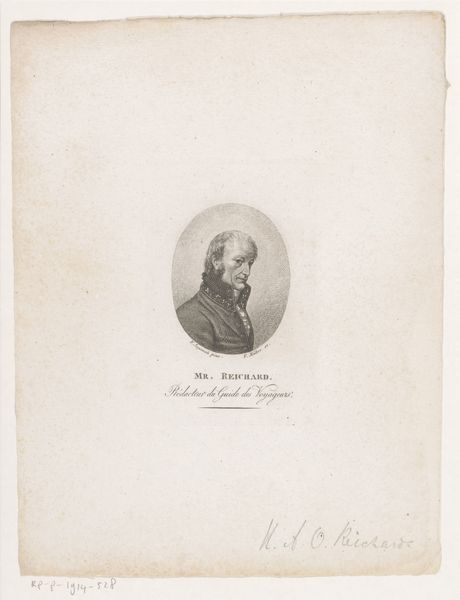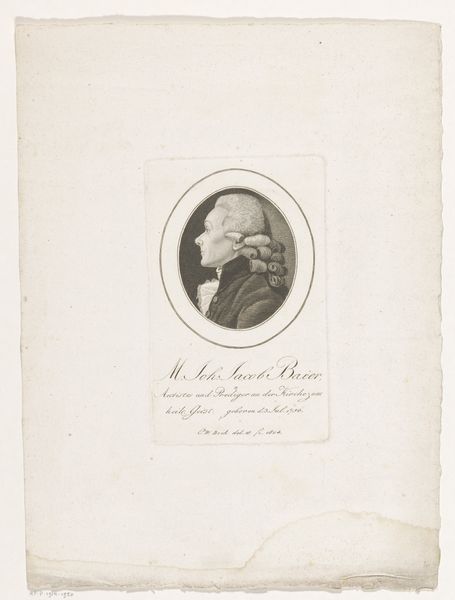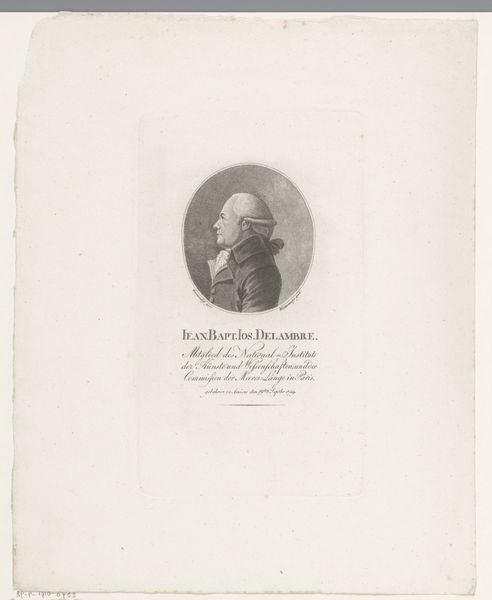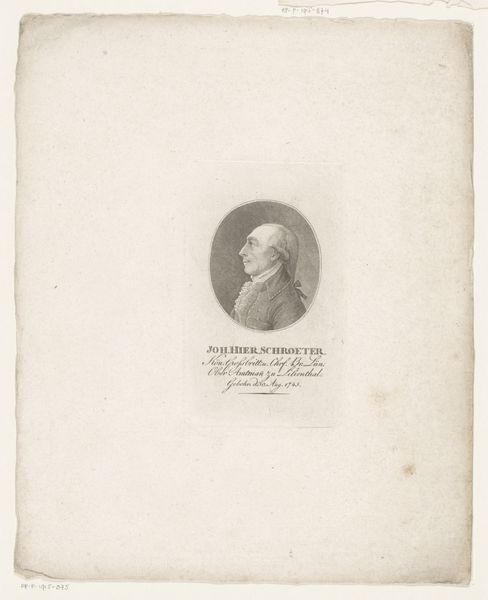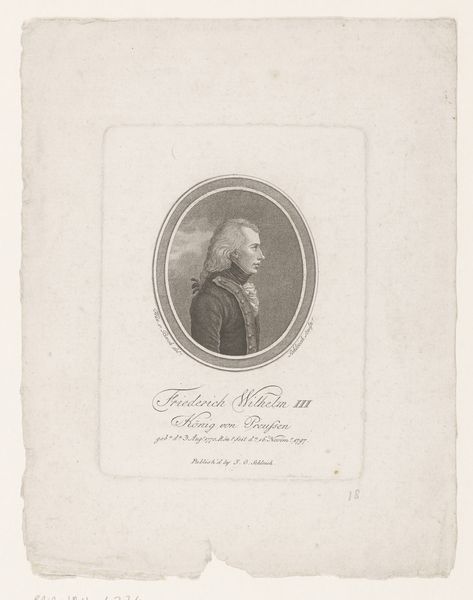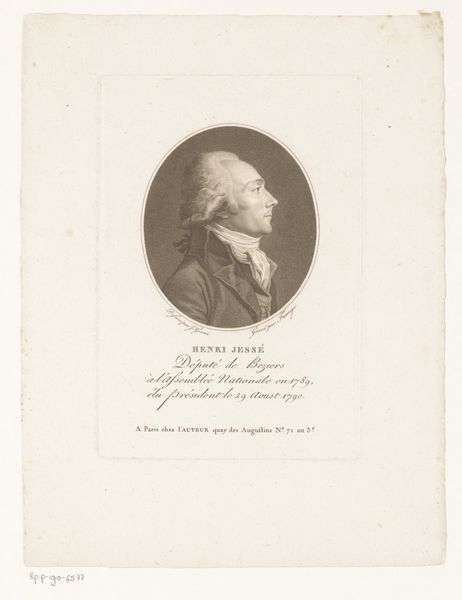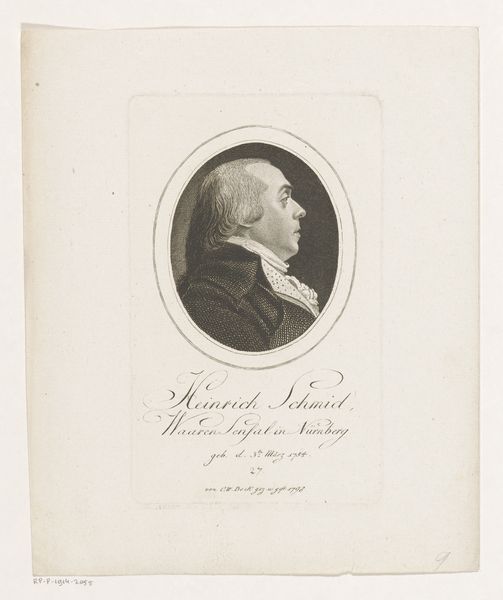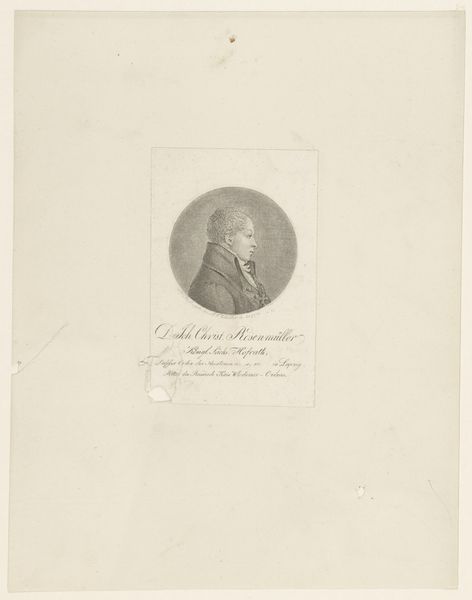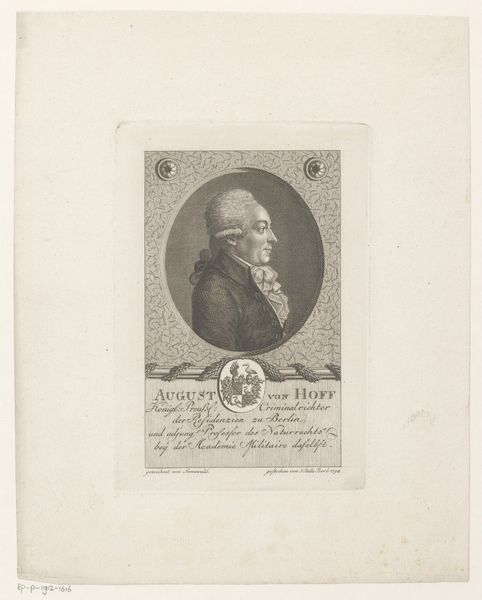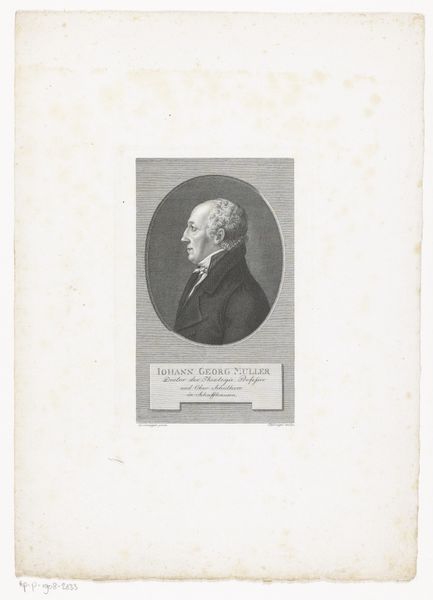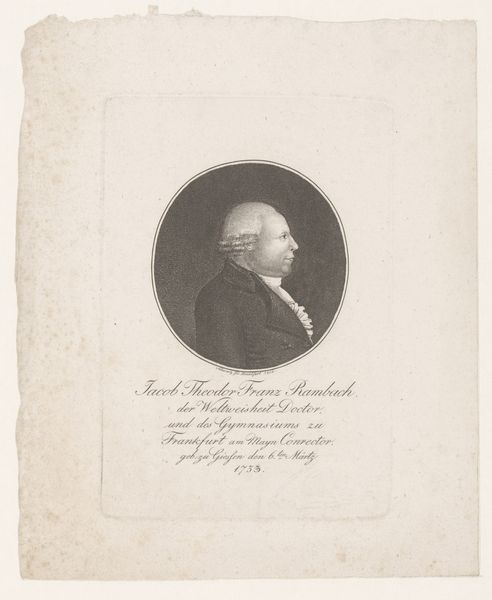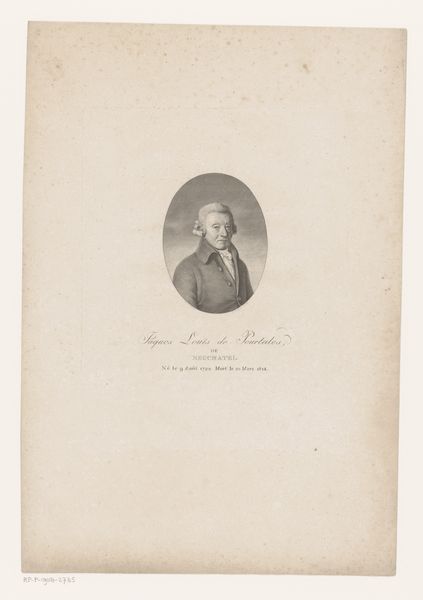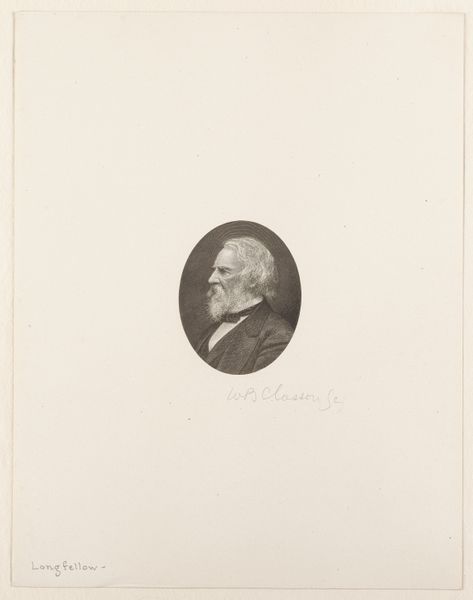
print, engraving
#
portrait
#
neoclacissism
# print
#
old engraving style
#
academic-art
#
engraving
Dimensions: height 288 mm, width 226 mm
Copyright: Rijks Museum: Open Domain
Editor: This is "Portret van Schweizer," a print made sometime between 1768 and 1831. It’s unsigned, attributed to Christophe Guérin, and it's currently held at the Rijksmuseum. The portrait is very formal and constrained; it evokes the stiff formality that I've come to expect of the era. What symbolism or imagery jumps out at you when you look at this work? Curator: The most immediately striking feature is its deliberate connection to classical imagery. Look at the oval frame and the subject’s profile; it is consciously referencing ancient Roman portraiture, a signifier of power and authority resurrected in the Neoclassical period. Do you notice how this stylistic choice ties into the sitter's role as a diplomat in a turbulent period? Editor: Absolutely, it reinforces his status and legitimacy, like a visual claim to order amid political chaos. But it feels a bit… detached, somehow. Curator: Precisely. The engraving, while skilled, presents a controlled, idealized image. The symbolism of the Neoclassical era aimed to communicate stability and reason during the revolutionary period. It serves as a counterpoint to the chaos; it creates an illusion of enduring order through these carefully crafted visual motifs. In this historical period the profile views would often signify power but are often co-opted into use of criminalizing images, such as wanted posters. Do you notice that tension? Editor: I see what you mean. On one hand, the Neoclassical elements are meant to convey authority. But viewing this portrait from a different lens it creates this criminalizing feeling. That definitely reframes my perception of this. Curator: Visual symbols, and this extends to artistic styles themselves, carry layers of meaning accumulated through time. In the age of revolution and social disruption, even something as seemingly simple as a portrait becomes charged with these historical and social meanings. Editor: I'll definitely think differently about these seemingly detached portraits moving forward!
Comments
No comments
Be the first to comment and join the conversation on the ultimate creative platform.
